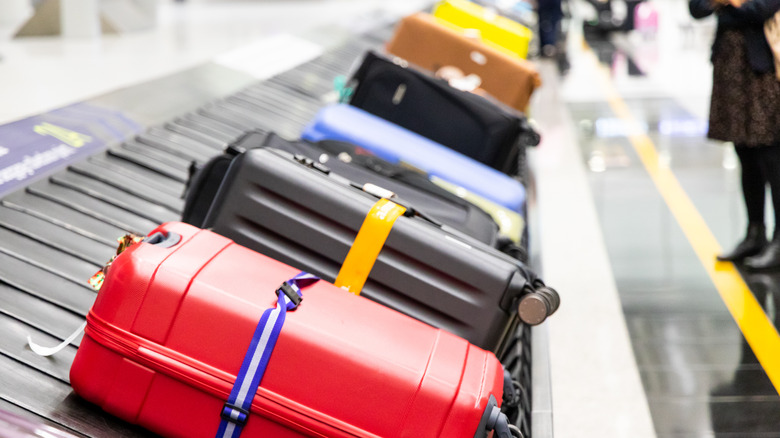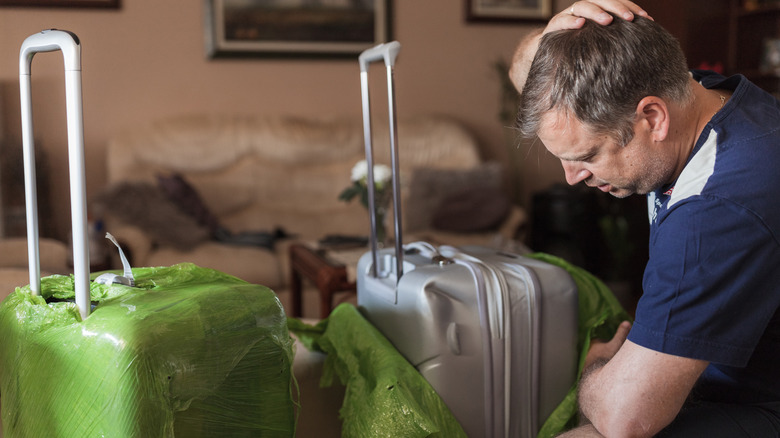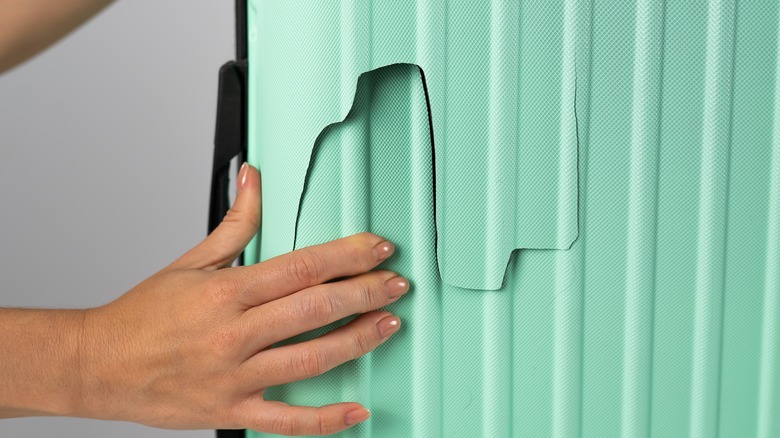The Best Thing To Do When An Airline Damages Your Luggage
There's little quite so disheartening as waiting at the baggage carousel at an airport and discovering that your luggage has been ripped, broken, or damaged. While worse things can happen when you travel, like the airline losing your luggage entirely, a damaged bag is certainly a hassle and an irritation. If your schedule allows, start the claims process before leaving the airport.
A baggage officer for the airline may have to physically see the damage for themselves before reimbursement can happen. If items within your luggage got damaged and you don't notice this until you get home or to your destination to unpack, you should call the airline and potentially plan to head back to the airport to speak with someone in person.
Airlines have differing time frames for when they'll accept baggage damage claims, ranging from a matter of hours (Southwest) to a day (American Airlines domestic flights) to a week (United). The sooner you can get your claim in motion, the better. You should receive a case or reference number — make a note of it so you can track your claim — and it doesn't hurt to get the name of the person you spoke to.
Try to keep your cool and document every step of your damage claim
Remain calm and take pictures of the damage. It can help to have photos of your luggage and the items in it so it's clear that the damage happened while in the care of the airline. Look for your airline's baggage office to find a person to speak to directly, and if it's closed, go to the check-in desk for your airline to determine the procedure for filing a claim.
Keep the luggage tags on your bags and snap a photo of them as you document the damage. This approach will help you prove that the damage to your bag occurred on a specific flight, even if the tags later get ripped off. If the luggage itself got damaged (not its contents) and the airline can't repair it, you can get a reimbursement based on the bag's value. The same goes for any broken items inside the luggage, though that may exclude certain pieces like electronics.
While each airline may approach damage claims differently, you may have to prove how much you paid for the luggage or the damaged items. If the airline won't pay out, some travel credit cards will provide additional protection in these situations.
Airlines won't pay for certain types of damage
The U.S. Department of Transportation website confirms that general wear and tear on a bag won't receive any compensation — a cosmetic scratch on a hard-shell suitcase won't cut it. Something like a broken wheel or an issue that means you can't fly with that bag again would be covered. Airlines will not pay if you have, for lack of a better phrase, a low-quality bag. They also won't cover any damage that resulted from you packing your bag poorly.
If you have something particularly valuable or fragile that you plan to put in your checked bag, make sure you have photo evidence of how you packed it, so there's no doubt about who is at fault if damage occurs. If you're the type of traveler who packs for a seven-day vacation in a carry-on bag, you may think this wouldn't ever happen to you. But you can still end up having to check a bag.
Whatever the reason — whether it's because the airline runs out of space in the overhead bins or you picked up so many souvenirs on your vacation that they don't fit in your carry-on — the care of your checked bag is out of your control. Even if you put a fragile sticker on your baggage, it could still end up mishandled. It's not malicious on the airline's part, though it can certainly feel personal, but accidents and mistakes happen.


